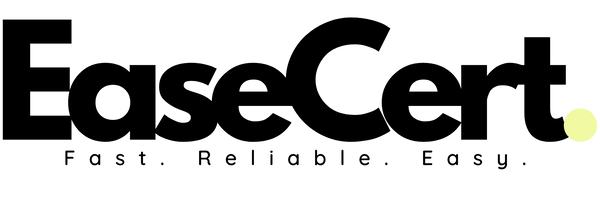
New EU Product Recall Requirements under GPSR
The General Product Safety Regulation (EU) 2023/988 (GPSR) introduces the most extensive overhaul of EU consumer product safety rules in over two decades. Having entered into full effect on 13 December 2024, the GPSR has replaced the former General Product Safety Directive (GPSD) and imposes far-reaching obligations on economic operators, especially concerning product recalls, consumer notifications, and the role of Responsible Persons for non-EU brands.
The EU’s Safety Gate 2024 report shows record product-safety enforcement across Europe. Our post about Europe’s Most Active Product-Safety Authorities in 2024 explains which national authorities filed the most alerts, how this affects GPSR labelling and documentation, and a practical, proportionate strategy for language coverage.
For businesses selling into the EU market, it is essential to understand how recall procedures must now be implemented and who is liable for the associated responsibilities and costs.
What Triggers a Product Recall Under GPSR?
Under the GPSR, a product recall is required when a product already on the market poses a serious or unacceptable risk to consumer health or safety. Recalls are one of several corrective actions (along with withdrawal, repair, or replacement) that manufacturers and importers must initiate without delay once such a risk is identified.
This decision is typically based on:
- Incident reports (e.g. injuries, defects, customer complaints),
- Risk assessments or test results,
- Warnings from market surveillance authorities,
- Manufacturer internal reviews or safety audits.
Once a risk is confirmed, authorities expect immediate action—including both communication and remedial measures—to protect consumers and prevent further harm.
Mandatory Use of Standardised Recall Notices
To ensure that recalls are clear and actionable for consumers, the European Commission introduced a standardised recall notice format through Implementing Regulation (EU) 2024/1435. This template has been mandatory since December 2024 and is designed to avoid vague or confusing language that might downplay the urgency of the recall.
Key content elements of a compliant recall notice include:
- Product name, image, model number, and barcode/GTIN
- Clear explanation of the risk
- Instructions for consumers on what to do
- Details of available remedies
- Company contact information
- Translation into relevant EU languages
Phrases like “voluntary recall” or “as a precaution” are discouraged. Clear, direct messaging is required.
How Must Consumers Be Notified?
The GPSR raises the bar for consumer-facing communication during recalls. Companies must:
- Use direct channels (email, SMS, account alerts) where possible
- Use public notices (websites, social media, press releases)
- Ensure the message is prompt, multilingual, and widely distributed
The principle is effectiveness—consumers must be informed quickly and accurately to take appropriate action.
Remedies Must Be Free and Fair
Businesses must offer at least two free remedies to affected consumers:
- Refund
- Replacement
- Repair
Remedies must be free of charge and provided without delay. There is no strict time limit, allowing consumers to claim remedies even long after purchase. Businesses must also manage recalled goods responsibly, including environmentally safe disposal where necessary.
Internal Procedures and Documentation
Companies must maintain a register of all recalls and withdrawals and keep technical documentation ready for authorities. This includes:
- Safety risk assessments
- Compliance declarations
- Corrective action logs
Notifications to the EU’s Safety Gate (via the Business Gateway) are required when a product presents a serious risk.
The Role of the EU Responsible Person
Non-EU manufacturers must designate a Responsible Person (RP) based in the EU. This party ensures the product is compliant and acts as the official point of contact for regulatory authorities.
Key Responsibilities:
- Verify safety documentation and labeling
- Ensure traceability and proper packaging info
- Cooperate with authorities and provide documents within 10 days
- Assist with recalls and customer notifications
- Be listed on the product or packaging with full EU address
The RP is not a passive entity—it must be capable of active regulatory engagement.
Who Pays? Liability and Financial Responsibility
The manufacturer is primarily liable for all GPSR-related costs, including:
- Product withdrawals and recalls
- Customer remedies (refunds, repairs, replacements)
- Regulatory fines or penalties
Implications for Online Sellers and Marketplaces
Online sellers using EU fulfillment services (e.g. Amazon FBA) may be treated as economic operators under GPSR. This includes parties involved in importation, packaging, or online selling. These sellers must ensure:
- Proper labeling and traceability
- Recall readiness
- Active cooperation with authorities
How to Prepare: Practical Recommendations
- Appoint a qualified EU Responsible Person
- Ensure traceability with batch numbers and supplier records
- Prepare multilingual recall templates in advance
- Set up customer alert systems (email, SMS, etc.)
- Maintain recall and corrective action logs
- Train staff on compliance protocols
Final Thoughts
The GPSR represents a significant shift toward more effective product safety enforcement. Recalls must now be managed with speed, transparency, and consumer focus.
EaseCert helps manufacturers and sellers meet GPSR obligations through Responsible Person services, documentation support, multilingual recall templates, and Safety Gate registration.
Need help updating your recall procedures? Contact us today.
